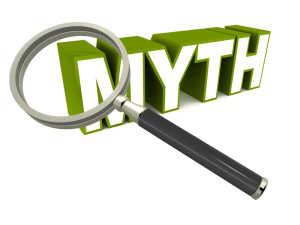
We all have a limited amount of System 2 (conscious) attention to dispose of each day, and when we’ve exhausted it we can’t quickly or easily replenish it.
Every waking moment, you are making judgments about where to focus your attention. If you didn’t, you would be overwhelmed by the vast amount of sensory information in your surroundings. The ability to direct attention, a skill humans share with species as primitive as fruit flies, helps you process what is important to you at the moment and ignore what is not. —Ingrid Wickelgren, Scientific American
The problem is that if you don’t have enough System 2 attention available to direct your focus, System 1 (the unconscious) will focus on what it thinks is important.
You use your conscious attention for many different things, some of which are necessary and unavoidable. You can exhaust it on important matters and complex tasks, for example. Or when you’re sick or injured or worried about a friend or family member. But you also probably squander conscious attention bit-by-bit on dozens of minor things throughout the day. Even worse, you may be squandering it on the same minor things day after day. Many of these things are literally just occupying space, thereby limiting the conscious attention you have available.
Inner Space and Outer Space
The things that occupy space in your mind (inner space) and in your environment (outer space) have an effect on the way you think, how effective your thinking is, and even what you think about. For example:
- It’s difficult to focus your attention, solve a problem, or complete a complex or demanding task when you’re preoccupied with another issue (inner space).
- It’s hard to focus or to think clearly when the surrounding decibel level gets above 90 (outer space).
- It’s difficult to avoid thinking about how utterly and completely disorganized you are every time you can’t find something—or what a sloth you are you when you can’t invite guests over for dinner because the dining table has become the repository for several months’ worth of mail, numerous unfinished projects, and the general detritus of your daily life (outer space).
- It’s next to impossible to be present or attentive when you’re in the process of running through your mental to-do list (inner space).
The more things occupying your inner and outer space at any given time, the less System 2 attention you have available. And the less System 2 attention you have available, the more likely you are to be at the effect of System 1 (unconscious/autopilot) thinking.
The Trouble with System 1 Attention
System 1 attention—also called bottom-up attention—isn’t always bad. In fact, it’s essential to your survival. But as Winifred Gallagher writes in Rapt: Attention and the Focused Life:
Bottom-up attention automatically keeps you in touch with what’s going on in the world, but this great benefit comes with a drawback, particularly for postindustrial folk who live in metropolitan areas and work at desks rather than on the savannah: lots of fruitless, unwelcome distractions. Maybe you want to focus on your book or computer instead of the fly that keeps landing on your arm or that ambulance’s siren, but just like your evolutionary forebears, you’re stuck with attending to those insistent stimuli.
Not only do you have to contend with a host of fruitless, unwelcome distractions in your environment over which you may have little to no control, you are also continually creating additional distractions in your environment and in your head.
The result is that, moment-to-moment, rather than being deliberately focused, your attention is likely to be spent responding to stimuli.
That’s important because what you put your attention on shapes the quality of your life.
We all have a limited amount of conscious attention available. We can’t easily get more, but we can learn how to make better use of what we have. A good first step is to try to identify what claims–and can drain–our conscious attention.
 These six beliefs are so pervasive they seem to be embedded in our culture. Most of them are meant to be motivational, but because they aren’t true, belief in these myths can have unintended consequences that harm rather than help. Ultimately, we need less external motivation and more straightforward education about how the brain and the mind actually work. Then we’ll be able to generate our own motivation—from inside.
These six beliefs are so pervasive they seem to be embedded in our culture. Most of them are meant to be motivational, but because they aren’t true, belief in these myths can have unintended consequences that harm rather than help. Ultimately, we need less external motivation and more straightforward education about how the brain and the mind actually work. Then we’ll be able to generate our own motivation—from inside.
 The answer may seem obvious; of course there’s a real you. But journalist and philosopher Julian Baggini, who studies the complexities of personal identity, offers a counterintuitive answer to the question. Baggini is the editor-in-chief of the Philosophers’ Magazine.
The answer may seem obvious; of course there’s a real you. But journalist and philosopher Julian Baggini, who studies the complexities of personal identity, offers a counterintuitive answer to the question. Baggini is the editor-in-chief of the Philosophers’ Magazine. Want to stay mentally sharp? There are all kinds of things you can do: listen to music, read a book, gaze at a building, help someone out, get involved in a hobby.
Want to stay mentally sharp? There are all kinds of things you can do: listen to music, read a book, gaze at a building, help someone out, get involved in a hobby.